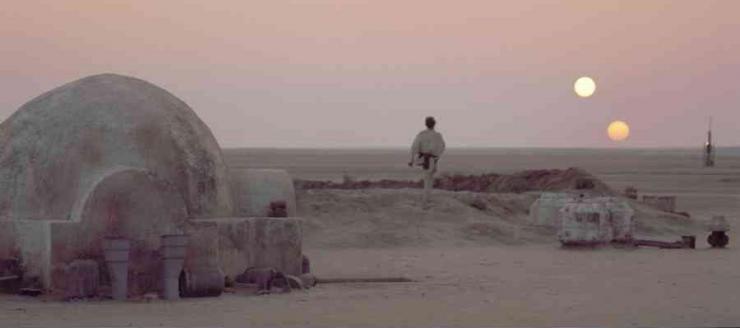
Gilbert Taylor, the acclaimed cinematographer who fought George Lucas over the look of Star Wars, died Friday at his home in the U.K. He was 99.
Taylor started in the film business when he was only 15, working as a camera assistant at London's Gainsborough Studios, and later finding work as a camera operator. During the Second World War, he served with the Royal Air Force for six years, filming the damage in the aftermath of British bombing raids in Germany. After the war, he became a director of photography and quickly developed a reputation.
By the early 1960s he was shooting episodes of the popular televison series The Avengers, and even served as director of photography for the first Beatles film, A Hard Day's Night. In 1964 he worked with director Stanley Kubrick on the classic Dr. Strangelove or: How I Learned to Stop Worrying and Love the Bomb, and his work on that film caught the eye of director Roman Polanski, who hired him to shoot both Repulsion (1965) and Cul-de-Sac (1966). His work with Polanski earned Taylor back-to-back nominations for Best Cinematography from the British Academy of Film and Television Arts (BAFTA).
In the 1970s Taylor worked with director Alfred Hitchock on Frenzy, one of Hitchcock's final films, and shot the horror classic The Omen in 1976. Then Lucas came calling, and Taylor was tasked with filming what would become one of the most important films of the 20th century, but Star Wars wouldn't prove simple. Lucas was so busy with other aspects of the production that he didn't make time for his cinematographer, leaving Taylor to find his own way.
“George avoided all meetings and contact with me from day one, so I read the extra-long script many times and made my own decisions as to how I would shoot the picture,” Taylor told American Cinematographer in 2006. “I took it upon myself to experiment with photographing the lightsabers and other things onstage before we moved on to our two weeks of location work in Tunisia.”When location shooting in Tunisia finally began, Taylor found that he and Lucas had very different ideas about how to shoot the film.
“I thought the look of the film should be absolutely clean; also, I was mindful that there was an enormous amount of process work to be done in America after we finished shooting in England, and I knew a crisp result would help," Taylor said. "But George saw it a differently, so we tried using nets and other diffusion."Taylor quickly saw that Lucas' philosophy of heavy filtration was making everything in the Tunisian desert look "mushed together."
"I told [Lucas] it wouldn’t work, but he said that was the way he wanted to do the entire film, all diffused," Taylor said.The dispute was resolved when Fox executives saw some footage featuring Lucas' diffusion techniques and decided the film should be shot Taylor's way. So, if you like the look of Star Wars, you've got him to thank.
After Star Wars, Taylor continued to contribute to genre cinema with work on films like Dracula (1979), and Flash Gordon (1980). He retired from feature filmmaking in 1994 to spend time painting and work on commercials. Speaking to the BBC after his death, Taylor's wife Dee called him "wonderful, kind, funny, amusing [and] terribly talented in every aspect." Plus, we've got him to thank for that opening shot of the Star Destroyer zipping over our heads.
(Via Slate)


